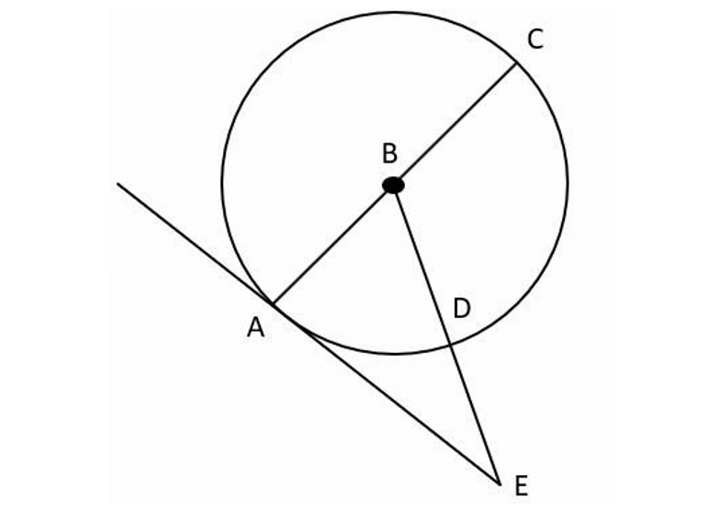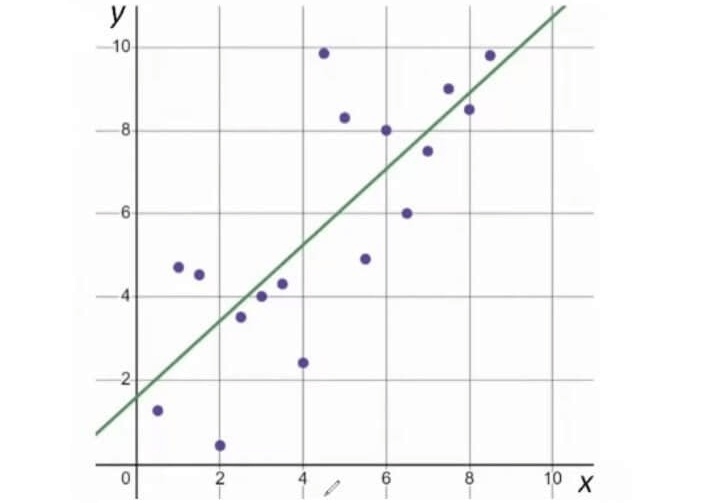HOW TO FIND DOMAIN OF A RATIONAL FUNCTION
What is domain of a function?
Let g(x) be a function.
Domain of the function g(x) is all possible values of 'x' for which g(x) is defined.
If g(x) is undefined for a particular value of x, then that value of x has to be excluded from the domain.
Let f(x) be a rational function.
To find the domain of a rational function, equate the denominator to zero and solve for x.
In the above rational function f(x), the denominator is g(x).
If g(x) is equated to zero, we get the equation
g(x) = 0
When we solve the equation g(x) = 0, let's assume that we get
x = a
So, x = a makes the denominator of f(x) zero.
In any fraction, if the denominator is zero, then it is undefined.
Therefore, the domain of the rational function f(x) is all real values except x = a.
That is,
Domain = R - {a}
Find the domain of the rational function.
Example 1 :
r(x) = (3x5 + x4 - 6x3 - 2)/(x2 - 9)
Solution :
Equate the denominator to zero.
x2 - 9 = 0
x2 - 32 = 0
Using algebraic identity a2 - b2 = (a + b)(a - b),
(x + 3)(x - 3) = 0
x + 3 = 0 or x - 3 = 0
x = -3 or 3
The domain is all real values except -3 and 3.
In interval notation,
(-∞, -3)U(-3, 3)U(3, +∞)
Example 2 :
r(x) = (5x3 − 12x2 + 13)/(x2 − 7)
Solution :
Equate the denominator to zero.
x2 - 7 = 0
x2 - (√7)2 = 0
Using algebraic identity a2 - b2 = (a + b)(a - b),
(x + √7)(x - √7) = 0
x + √7 = 0 or x - √7 = 0
x = -√7 or √7
The domain is all real values except -√7 and √7.
In interval notation,
(-∞, -√7)U(-√7, √7)U(√7, +∞)
Example 3 :
r(x) = (x5 + 3x4 - 6)/(2x2 − 5)
Solution :
Equate the denominator to zero.
2x2 - 5 = 0
x2 = 5/2
x = ±√(5/2)
The domain is all real values except ±√(5/2).
In interval notation,
(-∞, -√5/2)U(-√5/2, √5/2)U(√5/2, +∞)
Example 4 :
r(x) = (4x7 + 8x2 - 1)/(x2 - 2x − 6)
Solution :
Equate the denominator to zero.
x2 - 2x - 6 = 0
The above quadratic equation can not be solved by factoring.
Use quadratic formula to solve the equation.
Comparing ax2 + bx + c = 0 and x2 - 2x - 6 = 0,
a = 1, b = -2 and c = -6
Quadratic formula :
Substitute a = 1, b = -2 and c = -6.
The domain is all real values except 1 ± √7.
In interval notation,
(-∞, 1 - √7)U(1 - √7, 1 + √7)U(1 + √7, +∞)
Kindly mail your feedback to v4formath@gmail.com
We always appreciate your feedback.
©All rights reserved. onlinemath4all.com
Recent Articles
-
Digital SAT Math Problems and Solutions (Part - 268)
Aug 27, 25 10:25 AM
Digital SAT Math Problems and Solutions (Part - 268) -
Digital SAT Math Problems and Solutions (Part - 267)
Aug 27, 25 12:23 AM
Digital SAT Math Problems and Solutions (Part - 267) -
Digital SAT Math Problems and Solutions (Part - 266)
Aug 26, 25 08:50 AM
Digital SAT Math Problems and Solutions (Part - 266)

